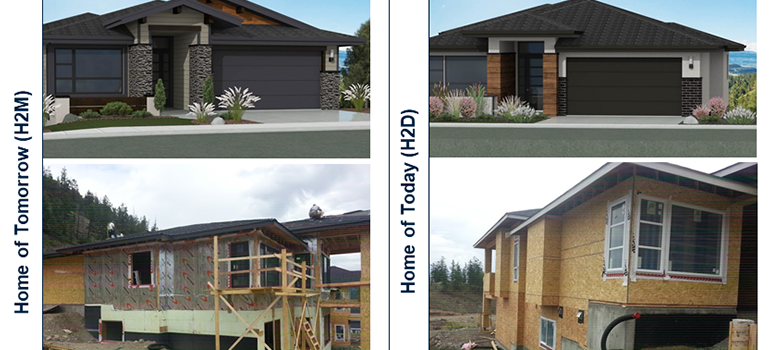Researchers at the Okanagan campus of UBC are into the second year of an extensive study looking at residential energy efficiency.

The Wilden Living Lab was developed to create a model for overall energy consumption, energy prediction systems, cost-benefit analysis and optimization of materials and systems for long-term financial savings.
Partnering with several Okanagan home builders, Fortis BC, a local geo-thermal company and Okanagan college, the researchers are tracking the energy savings between two homes. One home was built with the latest energy efficient materials and systems while the other was built to today’s standards. Both homes are wired to enable real-time monitoring of energy consumption.
The project is into year two of a three-year plan. Data-analysis, appliance usage monitoring and HVAC usage monitoring are nearly fifty-percent complete.
Shahria Alam, the lead researcher on the project says their focus right now is the development of an energy simulation model. “This model will provide us with energy usage predictions based on several factors including different components, materials, system efficiency, climate and usage”.
Over the next several months, researchers will begin inputting meteorological data and occupancy data into the model to provide a more accurate predication model.
In their most recent energy simulation, results indicate an over 95-percent reduction in greenhouse gas emissions, an energy savings of 61-percent and annual cost savings of 35-percent for the owners of the “home of tomorrow”.
The research goes beyond a comparison of the two homes, it also includes material testing on multi-pane windows and insulated walls.
Recently, the latest results from all facets of the project were shared with the project partners.
“These results may not be entirely surprising” says Alam “but providing homeowners and homebuilders with this type of analysis gives them the tools to make more informed decisions about what approach they wish to take in the future.”
The project also includes a component that looks at the long-term performance management and the life-cycle costs between the two homes.
“Ultimately, our goal is to determine the best methods for creating a sustainable home of the future through material innovations, net-zero building planning, healthy neighbourhoods and renewable energy planning.”
The project is made possible through the support of the National Science and Engineering Research Council, Blenk Development / Wilden, AuthenTech Homes, Geotility, FortisBC, NexGen Controls and Okanagan College and the participation of numerous local suppliers.
To learn more about the Wilden Living Lab project and subscribe to the Newsletter, please visit www.wildenlivinglab.com